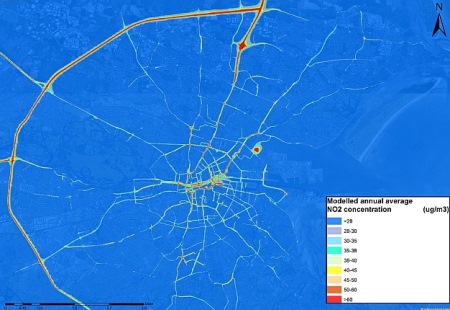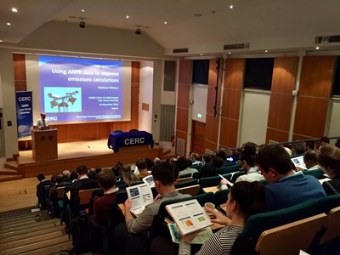CERC news
< Previous1234567891011121314151617181920Next >

17 Nov 2020Regional-to-local scale air quality modelling for Ireland
The Irish Environmental Protection Agency has contracted CERC to undertake regional-to-local scale air quality modelling for Ireland in order to generate air quality maps for the whole country.
The project will couple regional and local scale models using CERC's ADMS-Urban Regional Model Link. This will combine regional modelling undertaken by the UK Centre for Ecology and Hydrology using the Weather Research and Forecasting (WRF) mesoscale meteorological model and the EMEP regional chemical transport model, with local modelling carried out using CERC's street-scale resolution air quality modelling tool, ADMS-Urban.
The modelling will use gridded MapEIRE emission data, compiled by the Department of Environmental Science at Aarhus University in Denmark, as input to both the local and regional scale modelling. CERC will also develop a local-scale emissions inventory for the five main cities in Ireland (Dublin, Cork, Limerick, Waterford and Galway) and Ireland's major road network using EMIT.
This project builds on the success of CERC's previous Dublin air quality modelling work for the EPA, which was widely reported by local and national media. CERC will also provide training in air pollution mitigation strategy assessment for the EPA air quality team, allowing them to take the work forward.
The figure shows 2017 annual average NO2 concentrations modelled using ADMS-Urban as part of the earlier study.
22 Oct 2020ADMS User Group Meetings, Online, 18-19 November 2020: Draft agendas now available
The draft agendas for this year's ADMS User Group Meetings are now available. Tickets are available to order through Eventbrite until 23:30 on Sunday 15th November and cover the full two-day event. Organisations with a valid software support contract are entitled to one or more tickets free of charge depending on the type of licence held. Meeting connection details will be sent to registered participants before the event.
20 Oct 2020ADMS 5 online training now available
CERC are now offering online training for the model ADMS 5. Two sets of dates are available in November; please refer to the Training page for specific dates and prices. If you are interested in attending online ADMS 5 training, please email training@cerc.co.uk.
8 Oct 2020Consultancy Position
We are seeking a full-time Air Quality / Environmental Consultant to join the CERC consultancy team.
The successful candidate will be working on different types of consultancy projects, as well as supporting our customers through our model helpdesk service and training courses.
For more details see the job description. The closing date is 23 Oct 2020.

8 Oct 2020Registration is now open for the ADMS User Group Meetings, 18–19 November 2020, Online
The annual ADMS User Group Meetings are a great opportunity to hear the latest ADMS model news and advice from CERC consultants and model developers and to hear talks by model users about their own applications of the software. Normally held as two one-day meetings, with one day for ADMS 5 users and one day for ADMS-Urban & ADMS-Roads users, this year due to the COVID-19 pandemic we are holding a two-day meeting online for all users of ADMS software.
Tickets are available to order through Eventbrite until 23:30 on Sunday 15th November and cover the full two-day event. Organisations with a valid software support contract are entitled to one or more tickets free of charge depending on the type of licence held. Meeting connection details will be sent to registered participants before the event. The draft programme will be published soon.
You can also follow CERC news on Facebook, X, LinkedIn and by RSS.
< Previous1234567891011121314151617181920Next >

